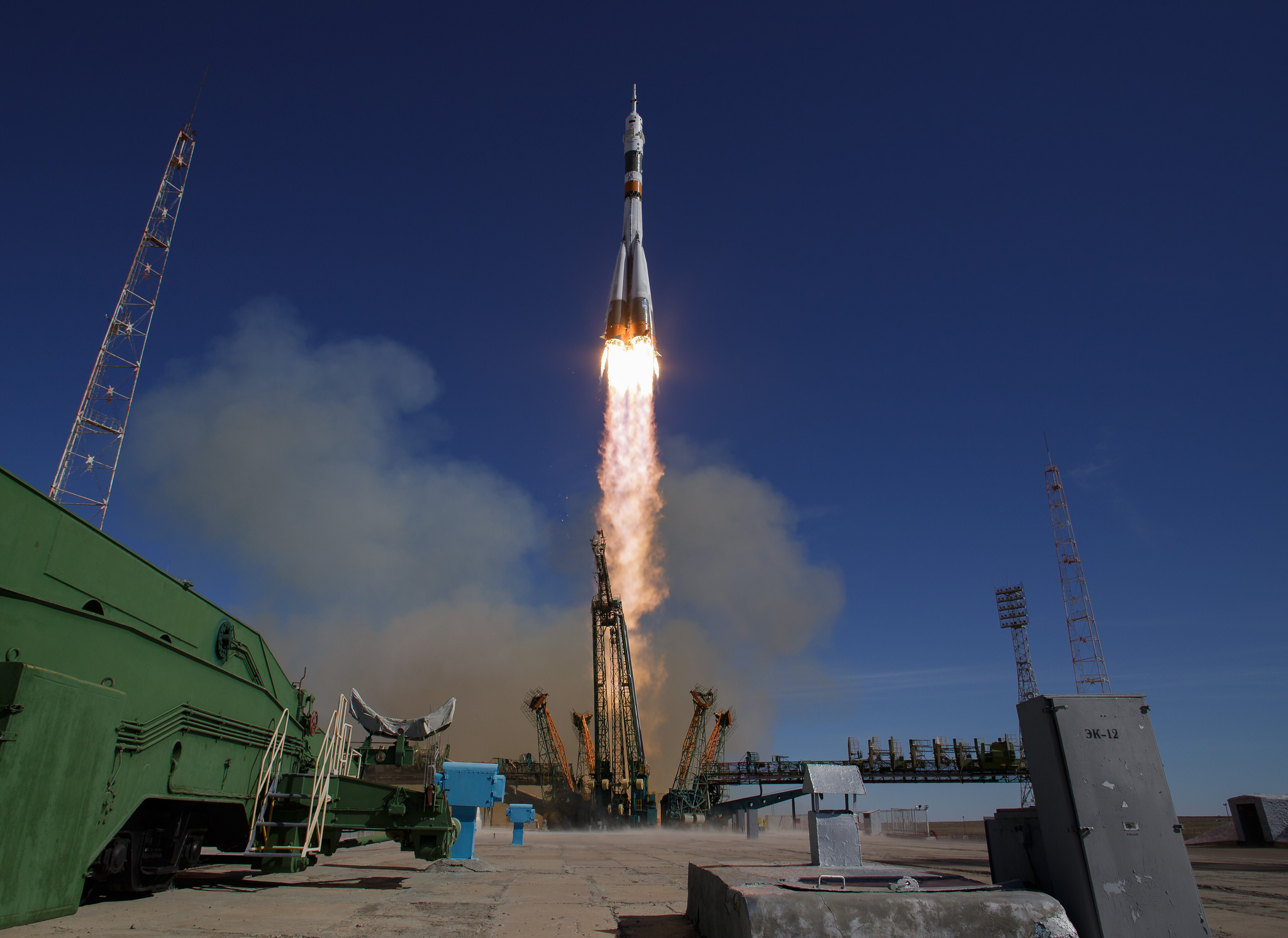What It Felt Like to Be Aboard the Failed Rocket Launch to the Space Station
Everything was going smoothly — until NASA astronaut Nick Hague felt a sudden tremor. "The first thing I really noticed was being shaken pretty violently side to side," he said during his first publicly broadcast interviews since his Soyuz rocket failed shortly after liftoff on Oct. 11.
The rocket was meant to carry Hague and Russian cosmonaut Alexey Ovchinin to the International Space Station in what would have been the American's first trip to space. Instead, the pair's emergency rescue system kicked into action after a problem during booster separation.
Their capsule separating from the troubled booster was the source of that shaking, and it was accompanied by an emergency light and alarm. Together, those signs told the two astronauts that their job description for the day had just been rewritten — instead of reaching the space station, it was now just to make it back to Earth safely. [In Photos: Space Station Crew's Harrowing Abort Landing After Soyuz Launch Failure]
Hague and Ovchinin turned to their emergency manuals and got to work navigating the sudden landing. But while Hague had been through simulations of all sorts of midflight events, he had never flown to space before, which meant he wasn't always sure whether an experience was typical of spaceflight or unique to their abrupt journey. "Everything was new for me, it was my first time," Hague said, thanking Ovchinin for sharing his previous experience during the landing. "He was able to tell me what was normal, what was not normal."
Hague compared his flight path to tossing a ball in the air, with the safety mechanism carrying the astronauts from the point where they separated from the rocket up to the high point of that path. "I got to experience a few seconds of weightlessness and I was able to watch a few things float around in the capsule" at the peak, he said.
He also took the opportunity to look out the window — not solely to admire Earth and space, but also to check how the spacecraft was positioned. "My eyes were looking out the window trying to gauge exactly where we were going to be," Hague said. "Were we going to end up landing in water? Were we going to be on the steppes of Kazakhstan? Did we make it far enough downrange that we were in hillier, more mountainous terrain?"
Then, it was time to come back down, and that's where the going got rough for a bit. "There's a whole series of events that we monitor as we are on our way back down," Hague said. That includes monitoring the capsule's orientation and how systems are responding to different inputs.
Breaking space news, the latest updates on rocket launches, skywatching events and more!
It also meant preparing physically for re-entry, making sure they were able to breathe normally while experiencing so much gravity. "We needed to be prepared to endure the 7 g's that we were going to experience," Hague said. That's more than during a standard landing (about 5 g's) but less than the 8 or so that astronauts are exposed to during training before they fly.
There were other preparations to make as well. "We needed to be ready for the opening shock of the [para]chutes and make sure all of our gear was in place, and then we have to work with the rescue teams," Hague said, adding that as soon as the parachutes opened, it was just like any other Soyuz landing. [Here's What the Failed Soyuz Rocket Launch Looked Like to an Astronaut in Space]
"Thirty-four minutes may seem like a long time, but I can tell you it seemed like a pretty quick instant from the time that the emergency happened to the time that I was landed in the capsule looking out my window," Hague said.
And just like that, they had done it, surviving the first crewed launch failure on a Soyuz rocket since 1983. "The first moment I was able to take a deep breath in this whole ordeal was after we came to a skidding stop in our capsule," Hague said. "My window was about 12 inches [30 centimeters] from the dirt that was outside and I was able to look through that and just breathe in and take a moment and realize just how lucky we were."
Quickly, he changed his mind, and once again turned the spotlight to the people who made his safe landing possible. "Maybe lucky's not the right word," Hague said. "I think fortunate is the right word, because as I've mentioned before, there are just thousands of people that are working tirelessly to put the systems in place, those very systems that saved us last Thursday."
Email Meghan Bartels at mbartels@space.com or follow her @meghanbartels. Follow us @Spacedotcom and Facebook. Original article on Space.com.

Meghan is a senior writer at Space.com and has more than five years' experience as a science journalist based in New York City. She joined Space.com in July 2018, with previous writing published in outlets including Newsweek and Audubon. Meghan earned an MA in science journalism from New York University and a BA in classics from Georgetown University, and in her free time she enjoys reading and visiting museums. Follow her on Twitter at @meghanbartels.

